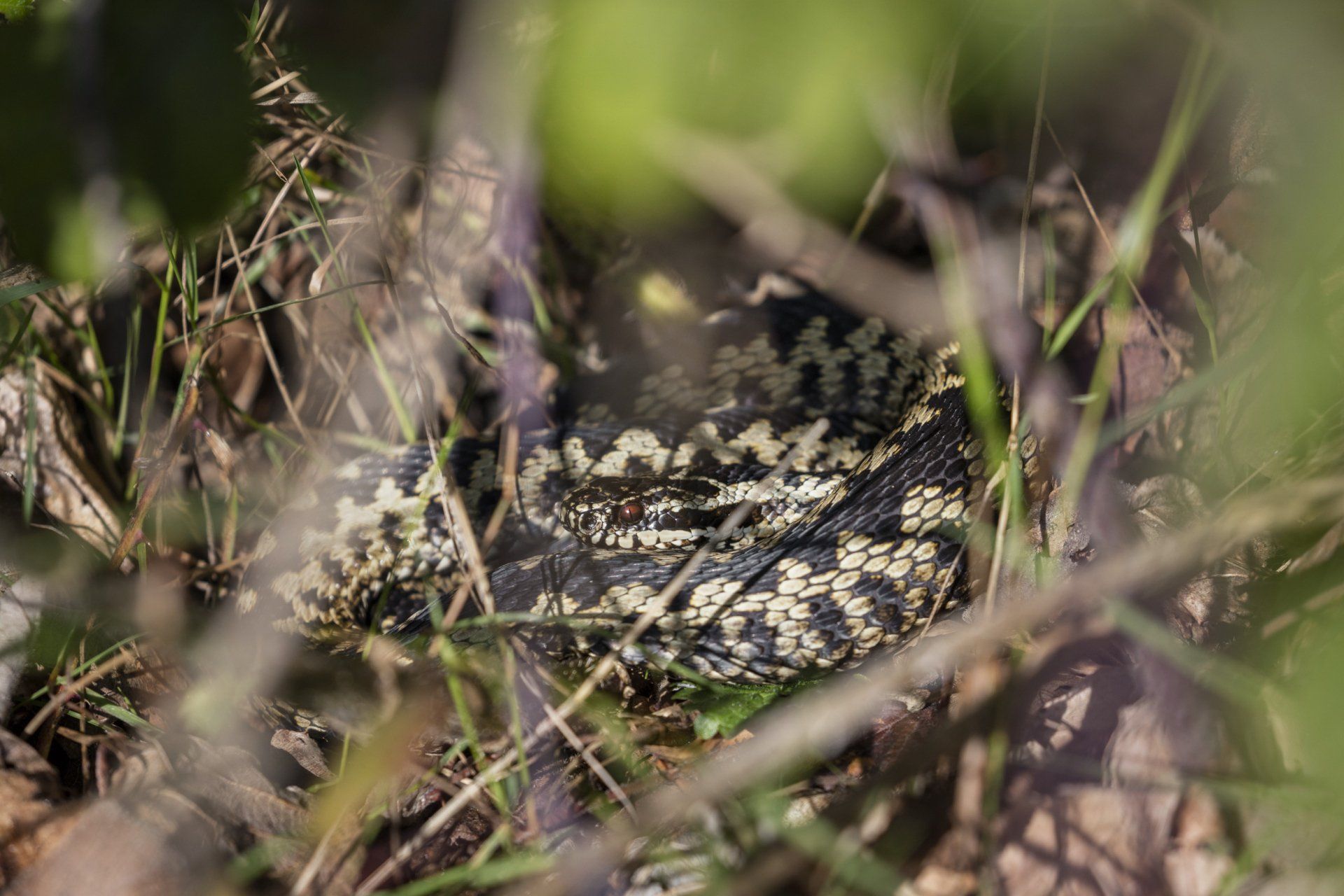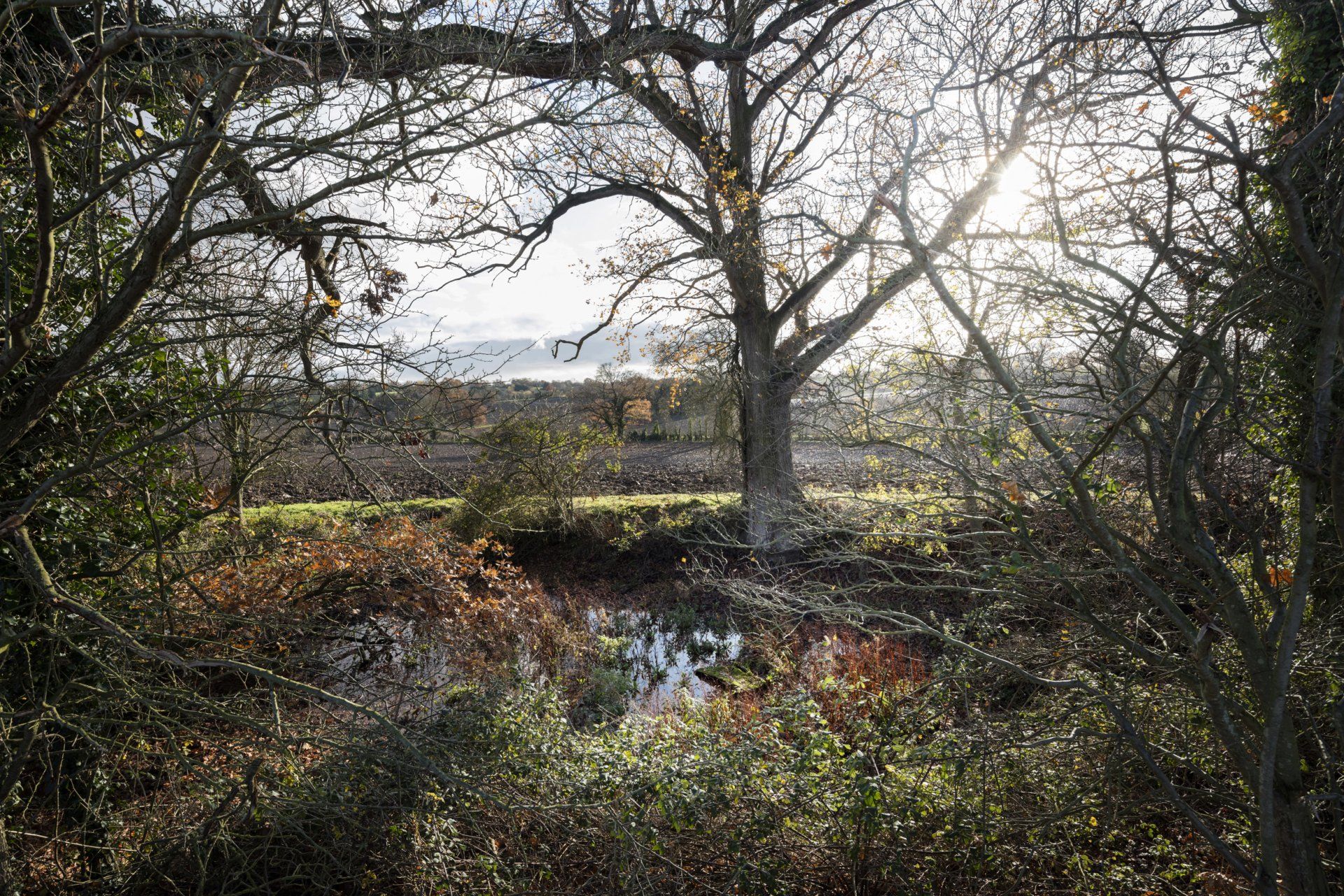Wilding The Future
How we can work together to make more space for nature?
Professor Tim O'Reardon is Emeritus Professor of Environmental Sciences at the University of East Anglia and a prominent British environmental writer and thinker. He is also chair of the Norfolk Association of Local Councils and is working with WildEast to make more space for nature.
He argues that the next decade will be pivotal in our fight against global heating and that increasing natural resilience at a local level through improved habitats is vital.

We humans are a rum lot... for millennia the slowly maturing Homo sapiens co-existed very connectedly with nature. This was not a harmonious relationship because our ancestors, like all species, sought to gain evolutionary advantage by manipulating nature. It is a moot point if any species, except possibly the completely symbiotic organisms, wholly envelops and is in turn enveloped by nature. Maybe there is always a “nature” which is not completely part of any species. Who knows for sure?
What we do know is that for many thousands of generations, humans and nature sustained each other by altering each other. Even today there are largely isolated human communities who are in a state of nurturing coexistence. What seemed to have retained their dynamic connectedness are three circumstances. One is that they were essentially mutually interdependent; the second is that the level of nature alteration was modest and for the most part ecologically tolerant; and the third is that nature provided the boundaries of both succour and danger for successful human flourishing. All this led to cultures of wholeness.
'Human personhood, and all the rights and interests inherent in it, should be extended to cover the ecological systems we inhabit; they are really part of us and should be respected as such.'
It was only in the 16th century that wealth began to spread beyond cities housing elites. Before then almost everyone was chronically poor, but surviving. Nature was altered, but at scales of time and space which were generally ecologically adaptable. By the beginning of the 18th century the combination of the Enlightenment, and the cultural acceptance of reason, innovation, and progress, changed human interpretation of nature. Less so nature was regarded as dangerous and wild: more so it became to be enjoyed, utilised and spiritualised. The romantic view of nature co-existed with the transformative interpretation. Nature was buffeted but also revered.
This generates a paradox. Humans hold a memory and an imaginary of an embalming nature, but a reality of a conquerable nature. The mighty review of the economics of biodiversity by an impressive commission headed by the Nobel Laureate economist Partha Dasgupta should be essential reading for members of WildEast. Read it
here: In its peroration Dasgupta and his colleagues mulled over the future of the convoluted relationship between humans and their natural surroundings
Our interview with Professor O'Reardon dives into the future of East Anglia and the concept of 'beingness'.
Human personhood, and all the rights and interests inherent in it, should be extended to cover the ecological systems we inhabit; they are really part of us and should be respected as such. A key aspect of personhood is identifying a self that contains this person. Normally this self is identified by the limits of the human body and the span of our lives.
The functioning of individual ecosystems is so sophisticated, in terms of their complex adaptability, that they create or possess a kind of personhood directly analogous to that of human beings. It is important to note that this takes place at the level of the ecosystem, rather than of the individual plants and animals that make it up.There is something about humans that makes us conscious and gives us free will. As such, there is nothing that we share with other complex adaptive systems like forests, or even the entire biosphere. Ecosystems and the biosphere are worthy of respect, not because they are persons in themselves, but because, like human beings, they exist for the purpose of bringing consciousness into being and supporting its existence.
'We identify who we are and why we exist by immersing with nature.'
This is an important message for adherents of WildEast. Both humans and nature have “beingness” through mutual personhood. In essence we become more fully human by allowing the entry of the beingness and personness of nature. Putting this in plain English, this means that we identify who we are and why we exist by immersing with nature.
Rewilding and regenerating are expressions of this reset connection. After all by rewilding and regenerating we are returning to our original sustaining (meaning perpetual but also progressive) purpose. We become inherently “gaian”, in that we are part of the continual restorative reorganisation of the living planet. Before the emergence of Homo sapiens, life on earth actively evolved to maintain the conditions for its perpetuation and better fit. Gaia is an evolutionary dynamic process in constant disequilibrium. It never stands still: it churns, competes, cooperates and transforms. If we wish to support Gaia, the human purpose is to replicate all of this for all of our generations to come.

How do we do that? Maybe we should imagine what the world might look like in one thousand years. There is an exciting part of creative art and thinking around the practice of “imaginaries”. Again in plain English it means letting the mind roam. At the very least we should encourage everyone and most especially the young to contemplate the unimaginable. What this means is that we face pathways over these one thousand years, routes which can be connected and constructed to lead to future states of nature which contain varying degrees of resilience.
'What WildEast may like to do is to embark on this exercise in Norfolk though initiating community discussion and schools learning and revelation.'
Such an exercise would begin with assessing the pattern of future population numbers and distribution over this trajectory. It would also assess global temperature paths influenced by the composition of the atmosphere. It must also address the culture of nature envelopment or estrangement in the body politic of humanity over the coming 30 or so generations. Of course there are many more variables in play. But these three are the symbols or icons of much of the changing influences for our future journey: population, temperature, and culture.
What WildEast may like to do is to embark on this exercise in Norfolk though initiating community discussion and schools learning and revelation. For the most part we do not care to consider one thousand years hence. Yet Norwich Cathedral is close to one thousand years old (it was initiated in 1096). So there was highly creative life that far back. And if we contemplate the monastic lands of Norfolk over 900 years ago we would have witnessed a panorama of biodiversity. If we use imagination by looking forward we immediately see that how we shape these three representational criteria will be determined not by what happens in one thousand years hence. It will be determined by what we do in the coming decade. It is as potent as that!
'If we love nature we love ourselves and our offspring.'
Of this troika the most challenging for WildEast is addressing the cultural dimension. This had come adrift from its Gain human interpretative roots. The messages from the Dasgupta Review are very pertinent here. We should help us all to imagine beingness, personness and connectedness so nature is actively part of our personae. If we hurt nature we harm ourselves and our offspring. If we love nature we love ourselves and our offspring. To get there Wild East should extend its mission by demonstrating rewilding, regeneration and creating community based natural areas in every nook and cranny of the region.
Groups of parishes can make a start by discovering pockets of nature that can be identified and saved and linked together. Every land owner including those who own farms and gardens can play an echoing part. For echoes amplify. Creating people’s nature and living it out through healthy activities by exercising, joining up neighbours, producing organic food, generating eco-enterprises of produce which enhance nature and community prosperity. These are all possible given vision, sharing, and cooperation.

Reducing our carbon, our methane and our nitrogen comes from regeneration and rewilding, and locking spare atmospheric carbon into vegetation, soils, and watery habitats. Doing all this to reduce the flow of heavy rainfall offers a double advantage. Beginning with caring for the land and water allows us to
extent our attention to our patterns of consumption, especially of energy, mobility and diet.
Mobilising us all begins a process of community solidarity which wags the moral finger at governments and businesses. Those activities which generate carbon, methane and nitrogen, will have eventually have to pay. This is not just a legal principle which has been too long ignored, namely that the polluter pays. It is also a profoundly moral principle, namely that the least emitting should be the more cared for when they are harmed and likely to be harmed by the outcomes of the carbon profligate.
'Every developer should contribute cheerfully to nature enhancement'
And every developer should contribute cheerfully to nature enhancement as an act of gaian solidarity. One way of achieving this would be by extending the community infrastructure levy (CIL), currently imposed on all sizeable development, to include a biodiversity contribution. There is a form of this in what is termed the green infrastructure levy (GIL). But this is puny, and often disbursed far away from where the so called net biodiversity gain is supposed to appear. What is needed is a nature betterment fund made available for bidding by parishes and wildlife charities such as Wild East. Such funds can be community managed not only to enhance the culture of nature beingness. They could kick start additional income and employment for young generations to become the sustaining stewards of every community, whether rural or urban.
The imaginaries of one thousand years hence depend on what we do in this decade. At the local scale the three icons can be unified. Wild East should join with the many like-minded who share this vision of hope but struggle, where this struggle is more easily carried by the many shouldering the burdens of the unavoidable transformations which Wild East initiates. In this way enveloping nature envelops social betterment and should provide a better prospect for all those who will inherit our bequeathed Norfolk landscape.
Dasgupta, P. (2021). The Economics of Biodiversity: The Dasgupta Review.
WildEast Blog

Powered by LocaliQ
Follow Us
SIGN UP FOR NEWS & UPDATES
Newsletter Sign Up
Thank you for signing up to our newsletter.
Please try again later.
Privacy / Terms & Conditions / Sitemap
